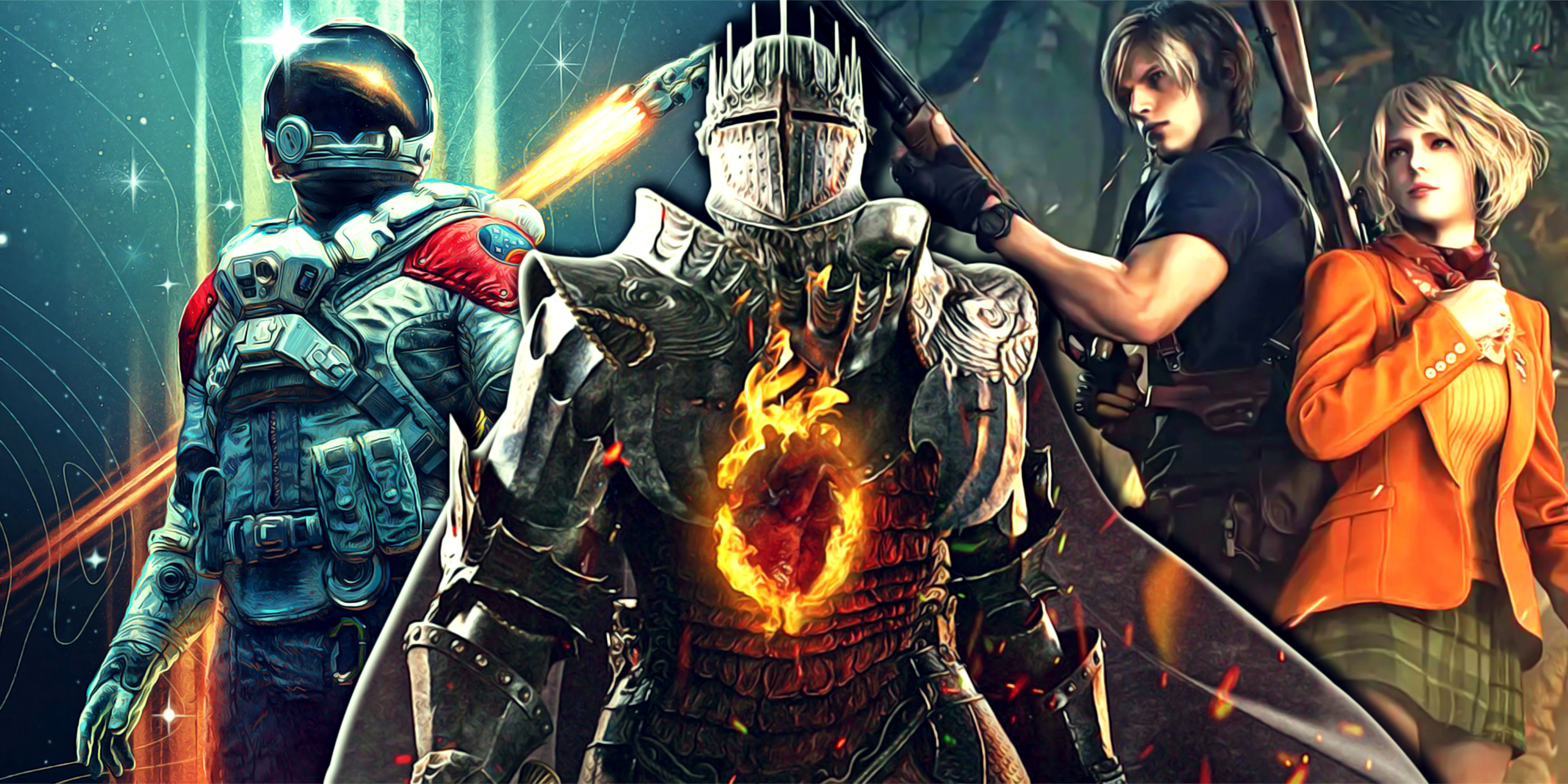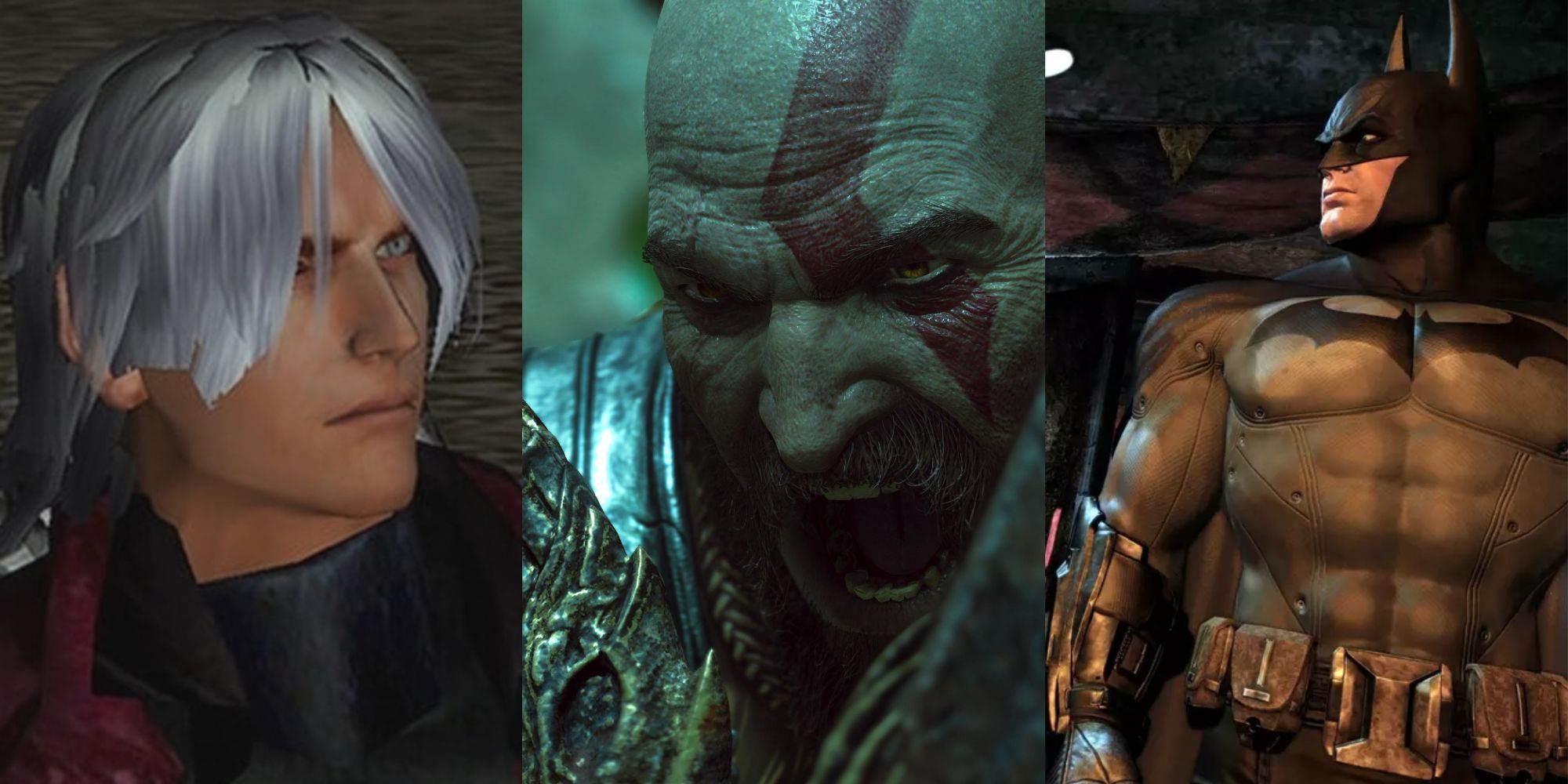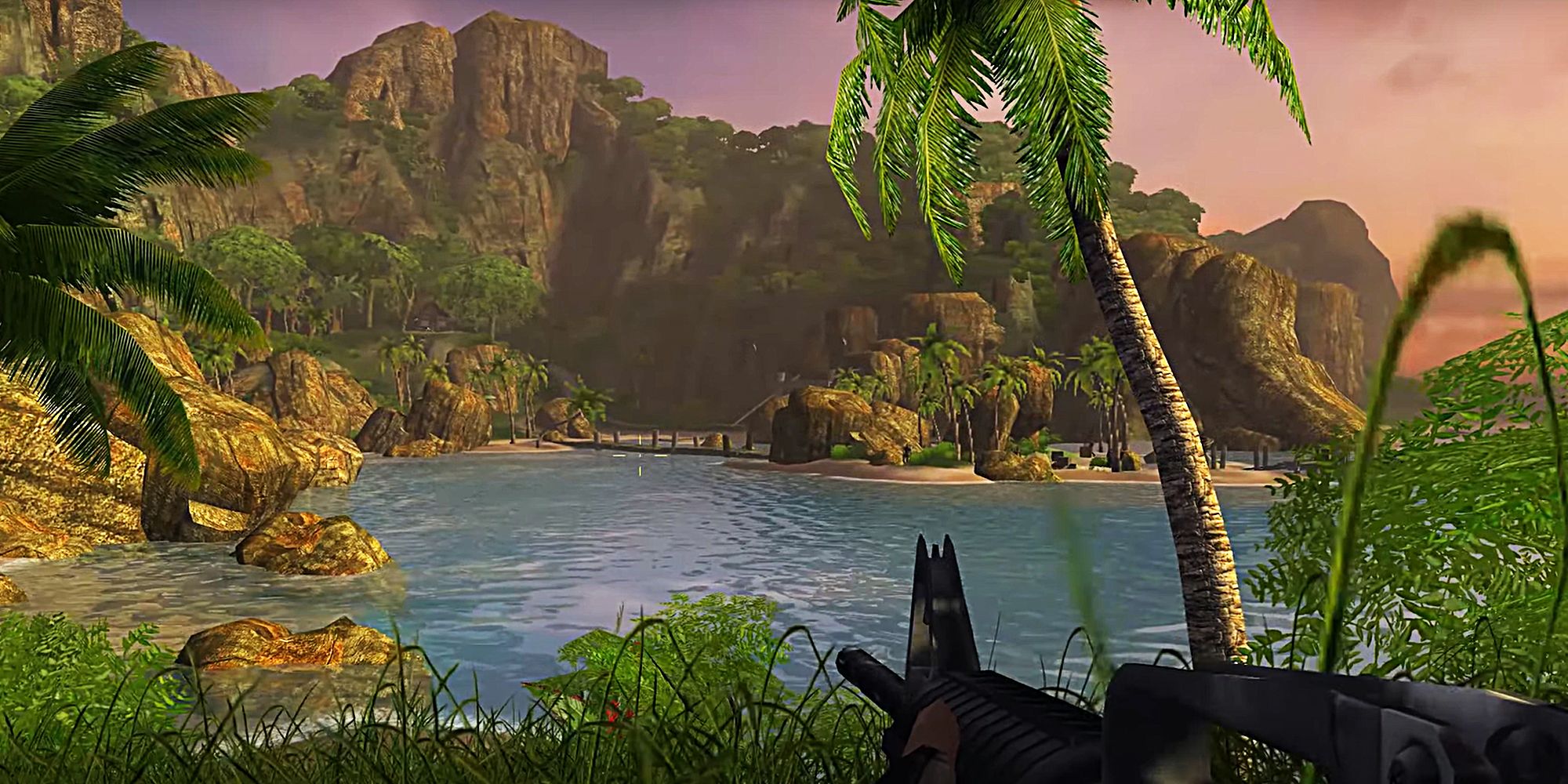Summary
- Graphics in games, when advanced, contribute to an ultra-realistic experience, especially when coupled with gameplay.
- Some games age well graphically, staying relevant for years to come, showcasing the skill of the studios behind them.
- With advancements in hardware slowing, game developers must find new ways to create stunning and jaw-dropping visuals.
While graphics don’t complete the game, visuals lend to the immersion factor. Coupled with gameplay, a graphically advanced game can feel ultra-realistic and a new technological step. With the creeping advances of graphics nowadays due to diminishing returns of hardware, it’s hard to remember that the video game industry used to see profound changes in fidelity in just a year or two.
6:24

Related
The 20 Most Graphically Demanding PC Games
They’re gorgeous, but these games have some high-spec GPU requirements. These are the most graphically demanding PC games to date.
Sometimes a game is designed so well, and its graphics are so advanced it takes years for the rest of the competition to catch up. Because of this, there are a decade or older titles that can feel like modern games today, which makes them a true testament to the craft of the studio that made them.
Updated December 18th, 2024 by Hilton Webster:With graphics having reached a plateau at this point, games have to go back to finding new ways to create jaw-dropping visuals. Plenty of games have already surpassed that, utilizing striking styles that shock you for how incredible they look, whether they’re a brand-new game or older than you could possibly imagine.
13 Forbidden Siren
Siren
- Released
- April 20, 2004
- Developer(s)
- Japan Studio
- Publisher(s)
- Sony Computer Entertainment
Following on from the success of the original SIlent Hill, Keiichiro Toyama departed from Konami to make his own game with Sony, Forbidden Siren. It was a horror game unlike many others, even to this day. It involved ‘sightjacking’, letting you look through the eyes of any character present in the area. It was terrifying, to say the least.
What the game achieves visually is just as remarkable. The areas and design are impressive, though it is the faces that really stand out. Instead of animating 3D models, images of human faces making various different expressions were mapped onto the character models. This resulted in faces that were exceedingly detailed, adding to the unnatural feel of the whole game.
12 Final Fantasy 13
- Released
- March 9, 2010
- Developer(s)
- Square Enix
Final Fantasy 13 has for the longest time been one of the most maligned entries in the series, much of that being centered around the game becoming much more linear than earlier entries. And while the game does open up later, that might have been too late for some. What no one can deny though are the absurdity of the game’s visuals.

Related
7 Rarest Final Fantasy Collectibles And How Much They’re Worth
Learn all about the most valuable Final Fantasy collectibles!
Not only is Final Fantasy 13 one of the most graphically impressive games in the series, it is one of the most gorgeous looking games on that generation of consoles. It was the first FF game on both PlayStation and Xbox, yet somehow looked and ran great everywhere. It was at this point that the in-game cutscenes had finally caught up with the visuals of the CG ones.
11 Silent Hill 3
Horror games sure do tend to age well, huh? There were plenty of games during the PS2 era that really pushed the system to its limits, achieving things that frankly don’t seem like they should have been possible. And Silent Hill 3 is another one of those games. While CG scenes dominated many of the cutscenes in previous games, Silent Hill 3 did away with them entirely. The game looked that good.
The detail on Cheryl’s face, the way light bends around corners and casts shadows. Even the opening scene with Cheryl in the diner and how the light casts through the slats of the blinds is just remarkable, even by today’s standards. It just shows to show that pre-baked lightning really can achieve some incredible visuals.
10 NFL 2K
The Dreamcast was the most advanced home console by a long shot when it was first released. Sega made sure to snag the attention of sports fans with their NFL 2K title, which had excellent gameplay and impressive visuals. When you look at the competition of the time – namely Madden – players were blocky, and animations looked stilted.
NFL 2K made the game of football look natural and smooth; the polygon counts for the players were very advanced for their time. Players were actually proportioned like players, and on the CRT TVs of the day, it was rather tough to tell if it was a TV broadcast or the Dreamcast.
9 Super Mario 64
- Released
- September 26, 1996
- Developer(s)
- Nintendo
- Publisher(s)
- Nintendo
Considering it came out in 1996, Super Mario 64’s graphics were artistic and beautiful. It took the graphical capability of the Nintendo 64 and set the tone for 3D platformers for an entire generation. Most modern Mario games can trace their art style back to this game and, frankly, look like a high-def update with all the new graphical effects added in.
For those of us who got our hands on an N64 and played this game for the first time, it was impressive with its 3D models and animations. Mario 64 looked good and was a must-have, making it the Halo of its day.
8 God Of War
God of War (2005)
- Released
- March 22, 2005
- Publisher(s)
- Sony Computer Entertainment
God of War was not only advanced for its time but advanced for the console it was on. How was this put on the Playstation 2? The textures are fantastic, the game could run at the time’s high def at 480i, and the character models are very detailed. This could pass for a third-person adventure game today, and nobody would bat an eye about it.
Considered one of the best games of all time, God of War is a visual feast on all levels, and critics at the time praised the title for it. It’s impressive, both in this game and future installments, watching Kratos take on much bigger enemies than himself. One has to marvel at how this game was a much more dynamic visual experience than the isometric graphics of Diablo 3 several years later.
7 Quake 3
Quake 3: Arena
- Released
- December 2, 1999
It is no surprise that many games were made using the Quake 3 engine. When this all-time classic came out, the visuals and deathmatch action were the gold standard. With the game using shader technology, high-res textures, and excellent effects, it became the pride and joy of someone who had just upgraded their graphics card.
It can’t be said enough that the Call of Duty series engine was just a heavily modified Quake 3 build. It was very advanced when it came out, and for some of those old enough to remember, if you heard a game was using the Quake 3 engine, you thought, “oh, this thing is going to look good.”
6 Crysis
Crysis
- Released
- November 13, 2007
Your computer still doesn’t run Crysis. This game was such a step forward that it became a benchmark program for graphic cards and computers many years after its release. The sheer number of visual features crammed into the Crysis engine was so massive, most PCs at the time – even the high-powered ones – couldn’t use them all.
The CryEngine 2 was used for this game and featured 850,00 shaders and a gig of texture data. Sure, technology moved on, and this thing was eventually ported to the power-starved Switch, but back in 2007, this was some kind of peak into the future. If you still pick it up, you’d be hard-pressed to think this game was creeping up on two decades old.
5 Far Cry
Foliage has been a big problem for video games for many years. It looked too flat and fake, breaking the immersion factor anytime you took your character outside. Far Cry changed all that in 2004 as Crytek’s first-person shooter excelled at showcasing an organic-looking island environment.
Nowadays, the great outdoors look spot-on in video games, and you can thank the steps taken in Far Cry for this. Crytek also followed this title up with Crysis, so you can tell the studio must either have a time machine or care about graphics.
4 Unreal
Every game uses the Unreal engine these days, but the series’ first entry was both pioneering and unique. Developed by Tim Sweeney, the first Unreal engine was based on software rendering but took advantage of many 3D cards at the time. It was at the epicenter of the graphics card revolution of the late 90s, along with Quake.
Its weird, dark art style looked great, and its outdoor environments looked better than the somewhat cramped corridors of the Quake engine. The game used 16-bit color, light blooms, and different volumes of fog volumes which is wild for a game than came out in 1998.
3 Donkey Kong Country
Donkey Kong Country
- Released
- November 24, 1994
While released relatively late in the Super Nintendo’s lifespan, Donkey Kong Country was a marvel of graphics. Designer Rare had decided to use pre-rendered graphics for the game and figured out a way to compress sprites. This resulted in the best-pre-rendered sprites ever created.
It must be said Donkey Kong Country looks more like a Playstation game than a Super Nintendo game, and it’s also one of the best platformers of all time. Rare brought 3D graphics to a console known for 2D games, and the result was one of the most impressive-looking SNES games of all time.
2 Red Dead Redemption 2
- Released
- October 26, 2018
Some still consider this the best-looking video game of all time, and it was released in 2018. Red Dead Redemption 2 was in development for a long time and cost a mountain of money, but the result was one of the most immersive-looking wild west environments ever created. The attention to detail is nearly endless, and people still find new details to gush about.
This also isn’t an on-rails experience; nope, Red Dead Redemption 2 is an open-world game meaning Rockstar had to make everything look great, not just a hallway here and a field there. RDR2 was essentially real-life, being replicated on someone’s flat screen. We’ll probably have to wait a decade or two before this game even begins to feel dated.
1 Doom 3
When screenshots of Doom 3 first hit the public, many people couldn’t believe what they saw. The effects that John Carmack had put in the id Tech 4 engine were used to perfection in creating creepy indoor environments. For the time, this felt like a monumental step forward in 2004 regarding how unified lighting and shadowing could be used.
While some critics didn’t like that it was as fast-paced as Doom 1 and 2, this game is getting more love years after its release as people began to realize this was supposed to be more horror survival and less rip and tear. It still looks fantastic today, and we jump when monsters jump on the screen.

Next
The Most Graphically Impressive Nintendo Switch Games, Ranked
Just because it’s smaller and portable doesn’t mean the games aren’t pretty!

























Leave a Reply